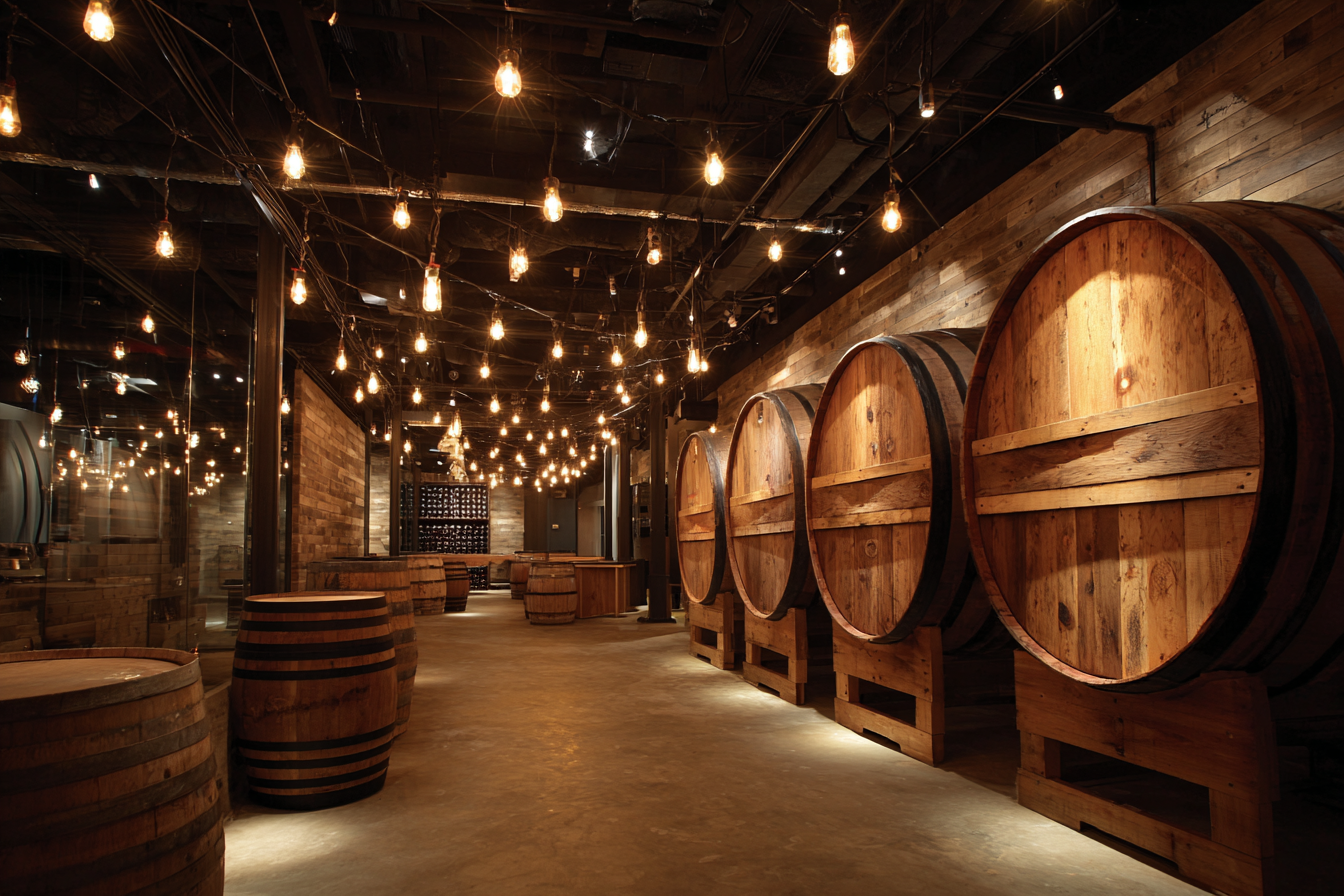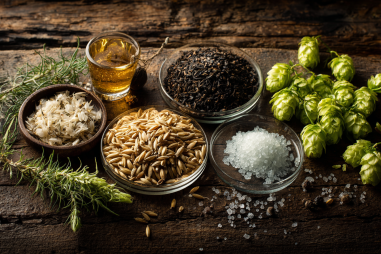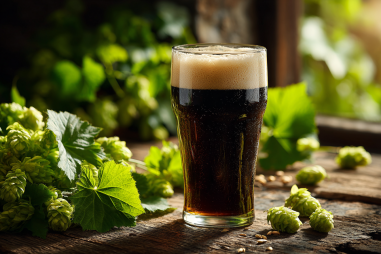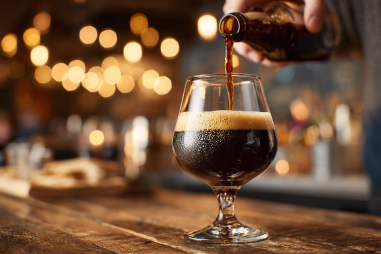American Barleywine stands out among beer styles for its robust character and remarkable aging potential. Unlike many beers best enjoyed fresh, American Barleywine can transform beautifully over time, developing deeper flavors, enhanced aromas, and increased complexity. Whether you are a passionate homebrewer, a seasoned beer collector, or simply a curious enthusiast, understanding how to age this bold beer style properly is key to unlocking its full potential. In this article, we’ll explore why American Barleywine ages so well, the chemical changes it undergoes, ideal storage conditions, and how to identify that perfect moment to savor your carefully cellared bottles.
Why American Barleywine Ages Well
American Barleywine is known for its high alcohol content, often ranging from 8% to over 12% ABV, as well as its rich malt backbone and intense hop character. These factors create a beer that lends itself beautifully to aging. The elevated alcohol acts as a preservative, slowing spoilage and allowing flavors to mature rather than spoil. The maltiness brings sweetness, body, and complexity — components that evolve over time, developing deeper caramel, toffee, and dark fruit notes. Meanwhile, the hop bitterness, which can initially be quite assertive, mellows, letting the malt and other nuanced aromas and flavors shine through.
In fact, the complexity of American Barleywine is somewhat analogous to a fine wine or whiskey that improves with age. Just as those beverages soften and deepen their flavor profiles, American Barleywine ages by balancing out its components, enhancing drinkability and richness after months or even years of cellaring.
Chemical Changes During Aging
The magic of aging American Barleywine lies in a variety of chemical and biochemical processes that occur slowly over time:
- Oxidation: Although often feared in many beer styles, controlled oxidation in Barleywine can create desirable flavors such as dried fruit, nuts, sherry-like characteristics, and a fuller mouthfeel. This happens when tiny amounts of oxygen interact with the beer’s molecules gradually.
- Ester and Phenol Transformation: The fruity and sometimes spicy esters and phenols produced during fermentation modify during aging. Esters may evolve from fresh fruitiness to richer, stewed or dried fruit aromas and flavors.
- Hop Compound Degradation: Hop bitterness, driven by iso-alpha acids, decreases with time. This softens the initial sharp bitterness typical of fresh American Barleywines, making the beer rounder and smoother.
- Malt Maturation: Maillard reaction products and melanoidins in malt continue to develop and unfold, enhancing caramel, toffee, toast, and sometimes chocolate notes.
- Alcohol Integration: Over time, the higher alcohol content integrates more seamlessly into the overall flavor profile, reducing harsh warming sensations and contributing to a lingering, warming finish.
Altogether, these chemical changes transform the beer from a bold, sometimes brash young brew into a multidimensional and mellowed masterpiece.
Ideal Aging Conditions
Proper storage is crucial to maximize the aging potential and preserve the quality of American Barleywine. Here are the best practices to follow:
- Temperature: Keep your Barleywine in a cool, stable environment ideally between 50°F and 60°F (10°C to 15.5°C). Fluctuations in temperature accelerate oxidation and other unwanted chemical reactions.
- Light Exposure: Avoid exposure to ultraviolet or fluorescent light which can cause “skunking” and break down delicate flavor compounds. Dark bottles help, but storing in a dark place like a cellar or opaque box is best.
- Humidity: Moderate humidity levels (~50-70%) help maintain the condition of bottle caps or corks, preventing air ingress.
- Positioning: Store bottles upright to minimize potential oxidation from contact with the cap or cork.
Many enthusiasts use dedicated beer fridges or wine cellars to create near-ideal conditions. Regardless of your storage method, keeping your Barleywine out of direct sunlight and away from heat sources will greatly improve the aging process.
How Flavors Evolve Over Months and Years
When you first crack open a fresh American Barleywine, you can expect intense malt sweetness, assertive hop bitterness, and bright fruit esters. But given time in optimal conditions, the flavor profile unfolds through distinct stages:
Within 6 Months
- Hop bitterness begins to soften.
- Fruitiness in esters grows deeper and slightly more complex.
- Malt notes gain more presence and start to introduce caramel and toffee flavors.
Between 1 and 3 Years
- Dried fruit flavors emerge prominently, with notes reminiscent of figs, raisins, or dates.
- Caramel and toffee evolve into richer molasses or burnt sugar tones.
- The beer mellows as alcohol integrates better, smoothing out harsh edges.
- Oxidation may add subtle sherry or nutty nuances.
After 3+ Years
- The beer approaches a complex, smooth dessert-like beverage.
- Bittering hops generally become minimal or non-existent.
- Some tannic or woody character may develop if barrel-aged or stored improperly.
- Depth and complexity peak, offering layered tasting experiences.
Not every Barleywine will improve indefinitely; much depends on the specific recipe, packaging, and storage conditions. Still, many collectors enjoy comparing bottles aged at different intervals precisely for this evolving character.
Bottling and Storage Tips
Whether you brew your own American Barleywine or buy specialty bottles, how you handle bottling and storage plays a vital role in aging success:
- Choose the Right Container: Bottles with tight-sealing caps or corks are essential to minimize oxygen ingress. Many specialty Barleywines come corked and caged for long-term aging, similar to champagne.
- Fill Level: Ensure bottles are filled to the correct level with minimal air space. Excess oxygen inside the bottle can cause premature aging and off-flavors.
- Label and Date: Keep track of bottling and purchase dates for proper cellaring and future enjoyment.
- Maintain Consistent Environment: Avoid moving bottles frequently as constant agitation can speed up undesirable chemical reactions.
Signs of a Perfectly Aged American Barleywine
Recognizing when an American Barleywine has reached its peak comes down to sensory cues and personal preference:
- Appearance: The beer may darken slightly with age but should remain clear without excessive cloudiness unless intentionally unfiltered.
- Aroma: Initial sharp hops or alcohol notes mellow and are replaced by rich malt aromas, dried fruits, caramel, and subtle sherry-like nuances.
- Taste: The bitterness is balanced by an intricate malt sweetness. Flavors are smooth, deep, and layered rather than aggressive or one-dimensional.
- Finish: A warming finish that is pleasant rather than harsh or hot. Lingering flavors that invite another sip.
Ultimately, the “perfect” age is subjective, and some drinkers prefer younger, more hop-forward profiles while others relish the mature richness. Start by sampling your Barleywine after a few months and experiment with longer cellaring to find your ideal window.
Recommendations for Collectors and Enthusiasts
For beer collectors and fans passionate about aging American Barleywine, consider these tips:
- Buy multiple bottles if possible, so you can taste the beer at various stages of maturity.
- Explore different breweries and recipes, as aging characteristics vary widely.
- Keep detailed tasting notes on aging and flavor evolution.
- Share bottles with friends or at tasting events to compare sensory experiences and recommendations.
- If interested in experimental aging, try storing some bottles in barrels or with specific yeast strains to add complexity.
Patience is an essential virtue in aging beer, and the results with American Barleywine are rewarding for those willing to wait.
Unlocking New Dimensions with Aging
American Barleywine is a remarkable beer style with rare aging potential that few other beers possess. Its high alcohol content, robust malt profile, and interplay with hops create a canvas for dynamic flavor development over months and years. When stored correctly, it transforms from a bold, brash brew into a complex, balanced, and deeply satisfying drink. Understanding the science behind aging, the ideal conditions, and the evolution of flavors empowers enthusiasts to experience beer in a whole new way. Whether you pick up a fresh bottle or open a well-aged cellar gem, appreciating the journey of American Barleywine aging enriches every sip.







